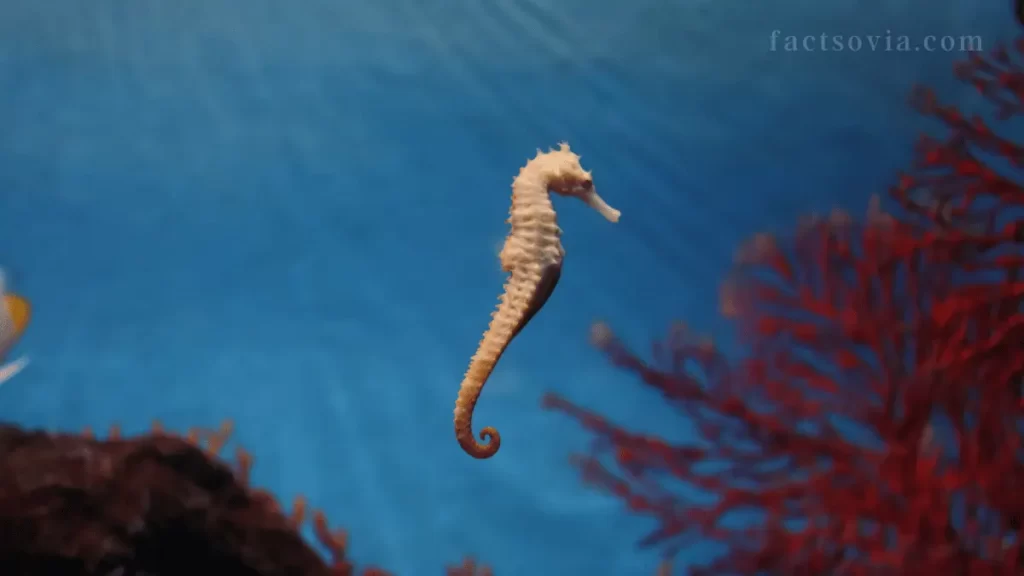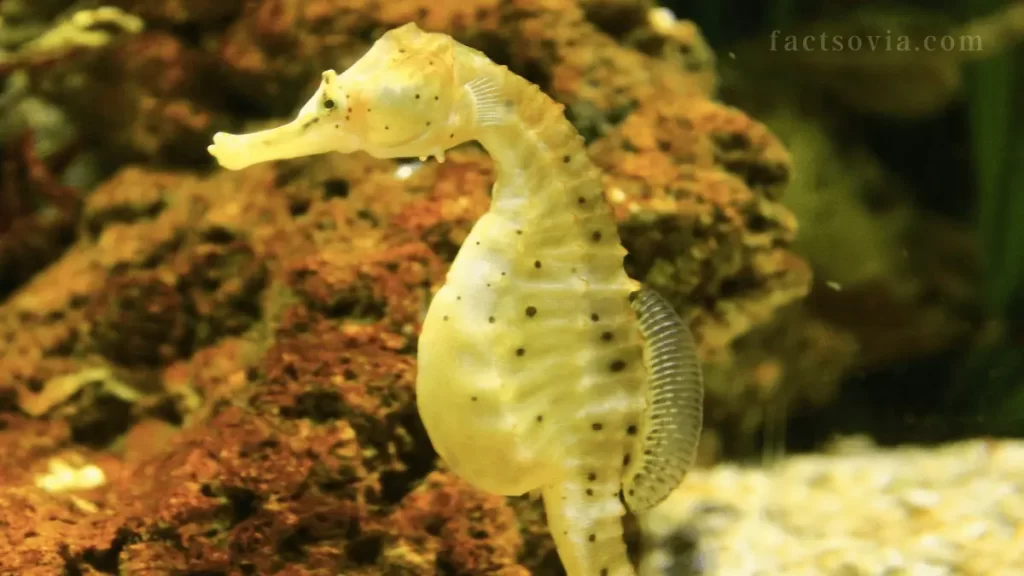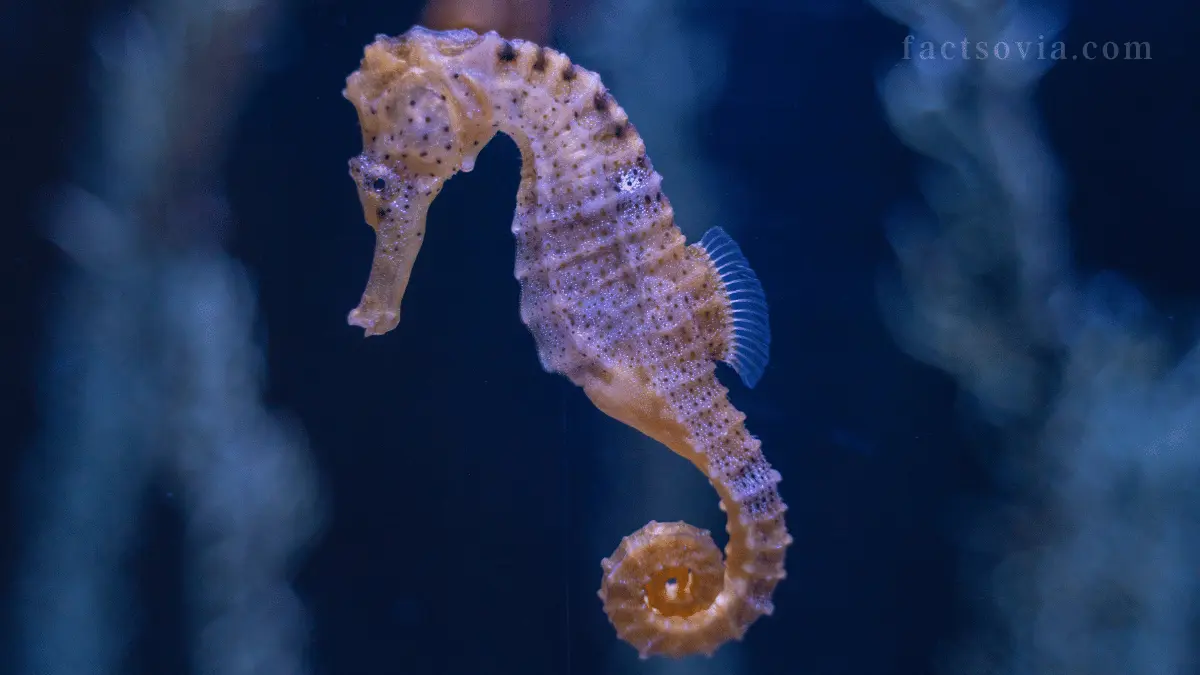We use affiliate links to run our site. When you buy through links on our site, we may earn an affiliate commission, without any added cost to you. Learn more
When it comes to the animal kingdom, there are a plethora of creatures that are quite unique in their own way. The seahorse, in particular, is one such creature that seems to have made its way into the hearts of animal lovers and enthusiasts alike. But, the big question still remains – is a seahorse a mammal?
There seems to be a never-ending debate on this topic and we’re here to settle it once and for all. Join us as we take a deep dive into the world of seahorses and uncover the truth about their classification.
What Makes An Animal A Mammal?
Mammals are a diverse group of animals that share certain distinct characteristics. One key feature that sets mammals apart from other animals is their ability to nurse their young with milk produced by specialized glands called mammary glands. This unique method of feeding allows mammal mothers to provide essential nutrients and antibodies to their offspring, ensuring their survival and growth.
Another defining characteristic of mammals is the presence of hair or fur on their bodies. Hair serves various purposes for different species, including insulation, camouflage, and sensory perception. Additionally, most mammals have a well-developed internal skeleton made up of bones or cartilage, providing structure and support for their bodies.
Mammals also possess highly efficient respiratory systems that enable them to extract oxygen from the air more effectively than other animals. They have lungs with numerous small air sacs called alveoli, which greatly increase the surface area available for gas exchange.
This adaptation allows mammals to take in sufficient oxygen and remove carbon dioxide efficiently, enabling them to thrive in diverse environments ranging from land to water.
These distinguishing features make mammals a fascinating group within the animal kingdom. Their ability to nurse their young with milk, along with the presence of hair or fur and specialized respiratory systems, contribute to both their diversity and success as a class of animals in various habitats worldwide.
Is Seahorse A Mammal?
No, a seahorse is not a mammal. Seahorses are classified as fish.
Mammals are characterized by having mammary glands and giving birth to live offspring. Seahorses do not have mammary glands, and they reproduce by laying eggs, which makes them part of the fish group.
The confusion might arise from their name, which includes “horse,” but their name is simply a reference to their appearance, not their biological classification.
Classification of Seahorses
| Taxonomic Classification | Information |
|---|---|
| Kingdom | Animalia |
| Phylum | Chordata |
| Class | Osteichthyes (Bony Fishes) |
| Order | Sygnathiformes |
| Family | Syngnathidae |
| Genus and Species | Hippocampus spp. |
Seahorses are fascinating creatures that belong to the family Syngnathidae, which also includes pipefish and seadragons.
Despite their unique appearance, seahorses are actually classified as fish. They have gills for breathing underwater and a swim bladder that helps them control their buoyancy.
However, what sets seahorses apart from other fish is their distinctive body shape and reproductive behavior.
One of the key characteristics used to classify seahorses as fish is the presence of scales on their bodies. These tiny plates provide protection and help maintain water balance within the seahorse’s delicate skin.
Additionally, like other fish, seahorses have fins that allow them to maneuver through water with ease.
Another important aspect of understanding the classification of seahorses is their reproductive strategy. Unlike most animals where females carry and give birth to offspring, it is actually the male seahorse who carries eggs in a specialized pouch until they hatch.
This unique adaptation makes them part of a group called “male brooders,” which includes some species of pipefish as well.
So, despite their distinct appearance and reproductive behavior, it is important to remember that seahorses are indeed classified as fish due to certain shared characteristics such as scales and fins.
Their ability to camouflage themselves by changing color adds another layer of intrigue to these captivating creatures!
The Unique Characteristics of Seahorses

Seahorses possess a variety of unique characteristics that set them apart from other marine creatures. One notable feature is their distinctive body shape, with a long snout and an upright posture.
This adaptation allows seahorses to camouflage themselves among underwater plants and coral reefs, making it easier for them to ambush prey while remaining hidden from predators.
Another intriguing characteristic of seahorses is their ability to change color. They have specialized cells called chromatophores that contain pigments that can expand or contract, resulting in different hues and patterns on their skin.
This remarkable skill enables seahorses to blend into their surroundings even more effectively, providing additional protection against potential threats.
Additionally, seahorses have a truly fascinating method of swimming. Unlike most fish that use caudal fins for propulsion, seahorses rely on the rapid fluttering of their dorsal fin (located on their back) to move through the water.
This unique form of locomotion gives them exceptional control over their movements and allows them to navigate complex environments such as coral reefs with precision.
These distinctive characteristics make seahorses one of the most captivating creatures in the ocean. Their ability to camouflage themselves seamlessly within their habitat combined with their peculiar swimming style showcases just how remarkable and adaptable they are in order to survive in the vast underwater world they call home.
How Do Seahorses Reproduce?
Seahorses have some of the most fascinating reproductive strategies in the animal kingdom. Unlike most other animals, it is the male seahorse that carries and gives birth to the babies. The female deposits her eggs into a special pouch on the male’s belly, where they are fertilized and develop until they are ready to be born.
This unique method of reproduction is known as “male pregnancy” and sets seahorses apart from many other species.
The process of seahorse reproduction begins with an elaborate courtship dance between males and females. They engage in intricate displays, including changing colors, swimming together in unison, and even spinning around each other.
Once a pair has formed a bond through this courtship ritual, they mate by intertwining their tails and engaging in a series of synchronized movements.
After mating, it is up to the male seahorse to carry out his role as “pregnant father.” He uses contractions of his abdominal muscles to push water through his brood pouch, allowing oxygen to reach the developing embryos inside.
The gestation period varies depending on the species but can last anywhere from two weeks to several months. When it’s time for birth, the male goes through intense muscular contractions until tiny fully-formed baby seahorses emerge from his pouch.
These remarkable reproductive strategies showcase just how unique and adaptable seahorses are as marine creatures. Their ability for males to bear offspring challenges traditional gender roles seen in many other animal species.
The Lifecycle of Seahorse
Seahorses have a fascinating life cycle that sets them apart from many other marine creatures. It all begins with courtship, as male seahorses perform an elaborate dance to attract a female. Once the female selects a mate, she transfers her eggs into the male’s pouch where they are fertilized and develop.
Inside the male’s pouch, the eggs undergo a process called embryonic development. This stage lasts for about two to four weeks, during which time the embryos receive oxygen and nutrients from their father through specialized structures in his pouch.
The male seahorse plays an active role in protecting and nurturing the developing embryos until they are ready to be born.
When it comes time for birth, the male goes through muscular contractions to expel fully-formed miniature seahorses known as fry from his pouch. These tiny creatures immediately enter into their own independent lives, searching for food and avoiding predators. Seahorse fry face numerous challenges during this early stage of life but possess remarkable survival instincts.
The unique life cycle of seahorses showcases their extraordinary reproductive strategies and highlights their importance within marine ecosystems. Understanding these processes is crucial for conservation efforts aimed at protecting these enchanting creatures and ensuring their continued existence in our oceans. Seahorses truly exemplify nature’s ability to surprise us with its diversity and ingenuity.
Seahorses Vs Other Fish

Seahorses are fascinating creatures that possess unique characteristics not found in many other marine animals. One of the most notable differences is their upright posture, which sets them apart from most fish species.
While seahorses may resemble small horses, they are actually classified as a type of fish known as pipefish. Despite this classification, their physical appearance and behavior differ significantly from other marine creatures.
Unlike typical fish species that swim by moving their tails from side to side, seahorses propel themselves through the water using a small fin on their back that flutters rapidly up to 35 times per second.
This method of swimming allows them to maneuver with great precision and control despite their seemingly delicate bodies. In contrast, most other marine creatures rely on different methods such as undulating their entire bodies or using powerful tail fins for propulsion.
Another distinguishing characteristic of seahorses is their reproductive strategy. Unlike many marine animals where females lay eggs and males fertilize them externally, male seahorses carry the fertilized eggs in a pouch located on their abdomen until they hatch.
This unique form of parental care is rare among marine creatures and further highlights the distinct nature of these fascinating animals.
From their upright posture and fluttering dorsal fin for swimming to the male’s role in pregnancy, seahorses truly stand out as remarkable beings in our oceans’ diverse tapestry of life.
Seahorse: A Very Interesting Animal
Seahorse Adaptations
Seahorses are fascinating creatures that have adapted to a variety of habitats in the ocean. They can be found in coastal areas, coral reefs, seagrass beds, and even estuaries.
One of their remarkable adaptations is their ability to camouflage themselves by changing color and blending in with their surroundings. This helps them hide from predators and ambush prey.
Another interesting adaptation of seahorses is their unique body shape. Unlike most fish, they have a long snout-like mouth that they use to suck up small crustaceans and plankton. Their bodies are also covered in bony plates instead of scales, providing them with protection against potential threats.
Seahorses are not strong swimmers due to their small fins but they have developed another adaptation to compensate for this limitation – a prehensile tail. This tail allows them to hold onto objects such as seagrass or coral branches, anchoring themselves against currents and preventing drift away from their preferred habitat.
These incredible adaptations enable seahorses to thrive in diverse marine environments. By blending into their surroundings, using their unique feeding mechanism, and utilizing their specialized tails for stability, these enchanting creatures have carved out a niche for themselves in the underwater world without relying on traditional swimming abilities.
What Do Seahorses Eat?
Seahorses have a unique diet that sets them apart from many other marine creatures. They primarily feed on small crustaceans, such as copepods and mysids, which they suck into their long snouts with incredible precision.
Seahorses are ambush predators, using their excellent camouflage to blend in with their surroundings before striking at passing prey.
The diet of seahorses has important implications for their survival and overall ecosystem balance. As top predators in their habitats, seahorses play a crucial role in controlling the population sizes of the organisms they consume.
By feeding on small crustaceans, they help regulate these populations and prevent outbreaks that could disrupt the delicate balance of the marine environment.
Furthermore, seahorse diets can be influenced by various factors, including habitat degradation and climate change. Changes in water temperature or pollution levels can impact the availability of food sources for seahorses.
This highlights the vulnerability of these fascinating creatures to environmental changes and emphasizes the need for conservation efforts to protect both seahorse populations and their vital food resources.
Final Thoughts:
While seahorses may share a few similarities with mammals, they are in fact classified as fish. Their unique characteristics, such as their reproductive system and resemblance to horses, have given rise to the ongoing debate of their classification, but it’s clear that they do not meet the requirements of being a mammal.
Nonetheless, seahorses continue to fascinate and charm people of all ages, and will no doubt continue to do so for years to come.
FAQs
Are seahorses horses or fish?
Seahorses are classified as fish. Despite their name and some horse-like features, such as their horse-shaped head, they are indeed a type of fish. However, they are quite unique and distinct from typical fish due to their unusual characteristics, such as their ability to move their eyes independently, their prehensile tail that can grip objects, and other features that set them apart from more conventional fish species.
Can Seahorses Change Color?
Yes, seahorses have the ability to change color, although their color-changing capabilities are not as extensive as some other animals like chameleons.
Which Seahorse Gives Birth
Seahorses are unique in the animal kingdom because it’s the male seahorses that give birth. During the reproductive process of seahorses, the female transfers her eggs into a specialized brood pouch on the male’s abdomen. The male then fertilizes the eggs and carries them until they hatch. When the seahorse fry are fully developed, the male gives birth to live young seahorses by expelling them from his brood pouch into the water.
Amazon and the Amazon logo are trademarks of Amazon.com, Inc, or its affiliates.
